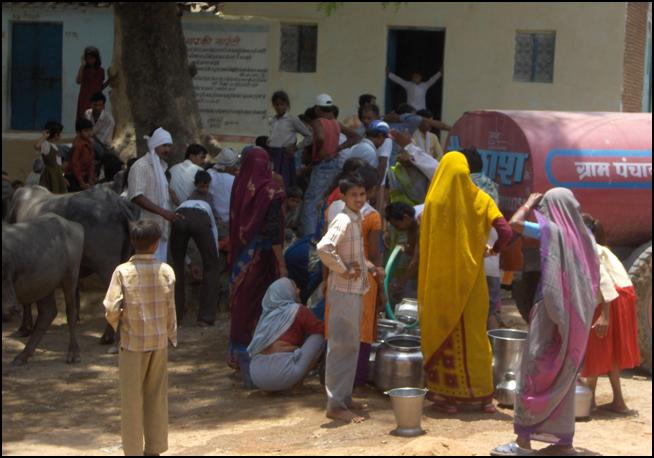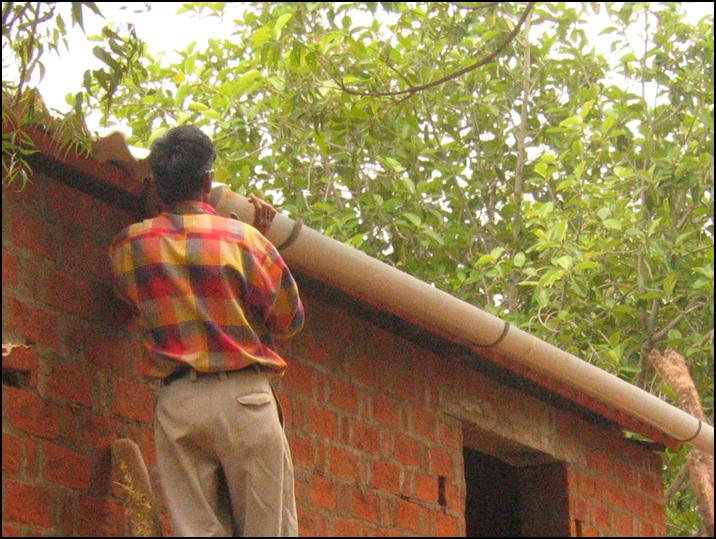|
Rainwater Harvesting: The Bundelkhand region, which can be easily characterised by the ill effects of poor water management, has suffered a lot due to poor practices to manage water in the last 6-7 decades. At one time, this region was a pioneer in terms of water harvesting based on today’s principles of watershed management practices. Continuous drought has disrupted not only the way of life but also the social structure of the entire community. If this phenomenon is a result of global warming and climate changes - as is being suspected by many experts - it may happen with greater frequency. In that case, we have reached the stage where every bit of effort to manage or conserve water matters. Rooftop rainwater harvesting, once considered as a style statement and not as effective measures, has become essential. Capturing Rainwater Through Roofs  Rainwater harvesting is a process whereby the rainwater falling to the earth is collected for later productive use. The harvested water can be either stored either in water tanks to be used later in dry spells/seasons or it can be recharged into the aquifers, significantly enhancing the sustainability of the nearby groundwater sources. Practically, rain falling on paved areas, including the roofs, comes and flows out of the area without being filtered into the soil. However, the same property can be used as an opportunity to collect more water from the same area. The roof water can be captured through a collecting system, either pipes or gutters (assume them as half cut pipes or open channels of metallic sheets) and through conduits the collected water is transferred to the point of storage/ recharge. Essential components and parts of the systems are the catchments (roof), water collecting systems (pipes/gutters), a downtake system (vertical pipes) including the first flush device (which is used for removing the silt coming through the first rains), a desilting chamber, and either a tank or any harvesting structure. How Does it Help? Out of the two approaches of storing water into the tanks and recharging aquifers, storing water in tanks was always assumed an expensive affair in places similar to Bundelkhand, where the dry season is significantly longer and mostly the rains are limited to the monsoons. The fact behind such an assumption is that a storage tank has to be large. However, in the local context, we considered it in the reverse. It was felt that in households here, there is always the need of water for different purposes which - in periods and regions of severe water scarcity - are filled by infrequent water tankers.  The investment on tanks was considered as the way to provide the people of Bundelkhand with a storage facility of water that can be used to accumulate the harvested rainwater during rains, thus reducing the uncertainty, drudgery and the cost of water for the individual households. Small hand pumps have also been attached to the tank structures to draw the water out when needed. Fifty rainwater harvesting structures covering 18 kuchha roofs and storing water in 42 storage tanks (the rest being recharged into the aquifers) covers an approximate 29,000 sq ft roof area. It turns the average 600 sq ft roof size into storage capacity of the 300 m3 installed tanks with the potential to harvest about 3500,000 litres of water. Rooftop rainwater harvesting in Bundelkhand is probably the first effort to ensure not only the water sustainability but also to protect the vulnerable communities against the ills of climate change. q Sonal Kulshreshtha
|